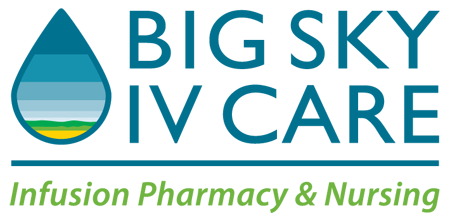I.V. Fluids and Hydration
IV rehydration is a treatment that involves injecting fluids into the veins. The fluid solutions are different depending on patient needs but are usually sterile solutions with salts, sugars or other additives. The solution can be administered with rate flow regulator or infusion pump through a catheter in a vein in the patient’s arm.
Purpose of Intravenous Rehydration
IV rehydration is a treatment that is used for cases of dehydration. When a person becomes dehydrated, fluid including water and dissolved salts, called electrolytes, is lost from the body. For mild cases of dehydration, that loss can be restored by drinking water or electrolyte solutions, such as sports drinks.
For moderate or severe cases of dehydration, the body may not respond to attempts to rehydrate orally. A doctor, or emergency medical professionals, can decide whether IV rehydration is needed.
Adults or children can develop chronic dehydration from being sick and having diarrhea, a fever, or vomiting. When a child is dehydrated, medical attention should be sought as soon as possible. Children are more quickly and more severely affected by dehydration than adults are. Children are more likely to need IV dehydration to restore fluid balance than adults.
Anti-Infective Therapy
Your doctor may prescribe anti-infective therapy to treat a serious infection that cannot be treated with oral medications or pills.
Our Anti-infectives Program provides comprehensive infusion services to combat serious infections in patients of all ages.
Intravenous Anti-infective therapy includes the provision of intravenous medications classified as antibiotics, antivirals and antifungals.
The Big Sky IV Care staff works closely with a patient’s physician to ensure the best quality of care. We remain in close communication with the patient and the physician throughout the course of treatment to ensure the best possible outcome.
Patients and their family members can easily learn to administer home IV anti-infective with training and support from skilled pharmacist and home infusion registered nurses.
Intravenous Catheter Types and Care
Central Venous Catheter
- You have a central venous catheter. This is a tube that goes into a vein in your chest. It helps carry nutrients and medicine into your body. It is also used to draw blood when you need to have blood tests.
- These catheters are used when people need medical treatment over a long period.
- You may need antibiotics or other medicines for weeks to months.
- You may need extra nutrition because your bowels are not working correctly.
Central Venous Catheter – Port
What is the purpose of a central venous catheter and port? Catheters are used when you need medical treatment over a long period of time. For example, you may need:
- Antibiotics or other medicines for weeks to months
- Extra nutrition because your bowels are not working correctly
Peripherally Inserted Central Catheter-PICC
Peripherally inserted central catheter – flushing. You have a peripherally inserted central catheter (PICC). This is a tube that goes into a vein in your arm. It helps carry nutrients or medicine into your body. It is also used to take blood when you need to have blood tests.
These catheters are used when people need intravenous (IV) medical treatment or routine blood drawing over a long period.
You will need to make sure the skin where the catheter is placed stays healthy. This will help protect you from infection.
You will also need to rinse out your catheter after every use. This is called flushing. Sometimes you will need to flush it between uses.
After some practice, flushing your catheter will get easier. One of our nursing staff will educate you, a friend, family member, or caregiver on how to flush your PICC line at home.
Hemophilia (factor therapy)
Hemophilia is a rare disorder in which your blood doesn’t clot normally because it lacks sufficient blood-clotting proteins (clotting factors). If you have hemophilia, you may bleed for a longer time after an injury than you would if your blood clotted normally.
Small cuts usually aren’t much of a problem. The greater health concern is deep bleeding inside your body, especially in your knees, ankles and elbows. That internal bleeding can damage your organs and tissues, and may be life-threatening.
Hemophilia is an inherited (genetic) disorder. There’s no cure yet. But with proper treatment and self-care, most people with hemophilia can maintain an active, productive lifestyle.
Treatment: Factor Replacement Therapy
What is factor replacement therapy?
The basic treatment to stop or prevent bleeding in people with hemophilia A and B is factor replacement therapy. This is the infusion (injection into the bloodstream) of factor VIII and IX concentrates to prevent or control bleeding. These concentrates come from two sources:
- human plasma (a component of blood) or
- a genetically engineered cell line made by DNA technology, called recombinant.
In both cases, the factor VIII or IX protein is nearly identical to the protein which is lacking in the blood of hemophiliacs. After an infusion of the concentrate, all the proteins needed for clotting are in place.
A hemophiliac’s blood becomes ‘normal’, at least for a few hours. This allows the time for a clot to form at the site of the damaged blood vessel.
Unfortunately, the replacement of the missing clotting factors is not permanent. Half of the clotting factor activity which was infused is removed by the body every 12 to 24 hours. This means that within 2 or 3 days almost none is left. The hemophiliac’s blood is again unable to clot normally.
For more information, visit the web site for the National Hemophilia Foundation: http://www.hemophilia.org/
Parenteral Nutrition
Parenteral (intravenous) Nutrition (PN), often called Total Parenteral Nutrition (TPN), is the medical term for infusing a specialized form of nutrition through your vein to treat and prevent malnutrition. It is typically used for people whose digestive systems either can’t absorb or can’t adequately tolerate food eaten by mouth. When used outside the hospital, intravenous feeding is called home PN. Using home PN may be necessary for weeks, months or lifelong, but most people who use it do so for less than one year.
Parenteral nutrition provides liquid nutrients, including carbohydrates, proteins, fats, vitamins, minerals and electrolytes, through a needle inserted into a vein.
You may need PN or Enteral feedings for one of the following reasons:
- Cancer. Cancer of the digestive tract may cause an obstruction of the bowels, preventing adequate food intake. Cancer treatment, such as chemotherapy, may cause your body to poorly absorb nutrients.
- Crohn’s disease. Crohn’s disease may cause pain, inflammation, bowel narrowing and other symptoms that affect your ability to eat, digest and absorb food.
- Short bowel syndrome. In this condition, which can be present at birth or occur as the result of surgery, you don’t have enough bowel to absorb enough of the nutrients you eat.
- Ischemic bowel disease. This may cause difficulties resulting from reduced blood flow to the bowel.
- Abnormal bowel function. This causes food you eat to have trouble moving through your intestines, resulting in a variety of symptoms that keep you from eating. Abnormal bowel function can occur due to surgical adhesions or abnormalities in bowel motility. These may be caused by radiation enteritis, neurological disorders and many other conditions.
- Vomiting and nausea. If unmanageable, uncontrolled vomiting and nausea may require that you take in no food by mouth and be prescribed nutritional supplementation.
Intravenous Immunoglobulin (IVIG)
What is IVIG therapy?
Intravenous immune globulin is abbreviated as IVIG and is often referred to as IG therapy. Immune globulin therapy is generally for people who have deficient or dysfunctional immune systems or who have autoimmune diseases.
Why is the home an appropriate place for IVIG treatment?
Treatments administered in the home provide a more comfortable and convenient setting for patients, and they allow the patient to fit the treatment into his or her own schedule.
Will my insurance cover IVIG therapy at home?
Yes, most IVIG therapy is covered by major medical benefits especially if the diagnosis is considered a Primary Immune Deficiency (PID). Depending on your insurance plan, patient out of pocket amounts can reach into the thousands of dollars. Our reimbursement specialists examine all your benefit options (including pharmacy and major medical benefits) to help you find the most cost-effective treatment.
For more information on intravenous immune globulin therapy, take a look at the Immune Deficiency Foundation web site: http://www.primaryimmune.org/
Chemotherapy
Big Sky I.V. can provide a limited range of continuous and injectable chemotherapy medications that compliment your physician’s plan of care. We also provide adjunctive therapies for cancer related treatments. Contact us for specific information (406) 752-0440.
Pain management
Pain management is important for chronic pain control. Big Sky I.V. provides medications to safely allow patients to give their own pain medications via a enclosed delivery system with a push of a button to offer timely pain relief. We work with your physician to determine an effective plan of care and most effective medications.
Specialty Drugs for Immune Compromising Diseases:
Big Sky I.V. Care has two infusions suites on site in which patients can receive specialty drug infusions to treat a variety of immune compromising diseases. These drugs may include IVIG, Remicade, Simponi Aria, Benlysta, Fabrazyme, Lumizyme, Orencia, Actemra and others. Some of the disease states we treat are as follows:
- Crohn’s Disease and Ulcerative Colitis
- Rheumatoid Arthritis
- Lupus
- Primary Immune Deficiencies
- Enzyme Deficiencies
- Ankylosing spondylitis
Patient Education
Educating patients and caregivers in proper infusion care is our primary concern. To this end, each patient and caregiver receive personal education and an instruction manual tailored to their treatment needs. This personalized care plan provides an easy-to-understand resource, supporting the patient’s ability to regain independence as quickly and comfortably as possible.
Our Reimbursement experts will take care of all reimbursement issues, from obtaining up-front authorizations to informing the patient of coverage and co-pay amounts prior to start of care.
IV Iron Replacement Therapy
Iron replacement therapy is important for people with an iron deficiency. Iron is an important element that delivers oxygen from the lungs to all parts of the body. When iron is depleted, oxygen is unable to circulate throughout the body which can cause the following signs and symptoms:
- Extreme fatigue
- Weakness
- Paleness of skin
- Headache
- Dizziness/lightheadedness
- Coldness in hands and feet
- Brittle nails
- Chest pain/elevated heart rate
- Shortness of breath
You may benefit from iron replacement therapy if you have limited iron availability due to dietary restrictions, chronic use of antacids or medications for acid reflux/indigestion, celiac disease, gastric bypass surgery, inflammatory diseases, or kidney impairment. You may also benefit from iron replacement therapy if you have an increased need for iron due to pregnancy, athlete, or blood loss (due to menses, GI bleed, regular blood donations).
Intravenous (IV) iron replacement therapy is a good choice for people who are unable to take oral medications, have failed oral iron replacement therapy, or who require rapid iron replacement.
If referred to Big Sky IV Care for IV iron replacement therapy, our dedicated staff will work closely with your healthcare provider and insurance provider to make sure the appropriate therapy is initiated.
Big Sky IV Care can provide the following IV iron replacement therapies:
Injectafer – 750mg IV x2 doses separated by 7-14 days
Venofer – 200mg IV x2 doses separated by 7-14 days


